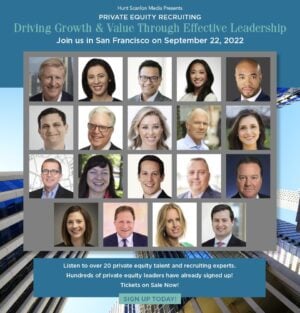Jobless Claims Fall for the Third Straight Week as Recovery Continues

February 10, 2022 – The Labor Department reported that 223,000 Americans have filed new claims for state unemployment benefits, a decrease of 16,000 from the previous week’s revised level. The previous week’s level was revised up by 1,000 from 238,000 to 239,000. The four-week moving average was 253,250, a decrease of 2,000 from the previous week’s revised average. The previous week’s average was revised up by 250 from 255,000 to 255,250.
The advance seasonally adjusted insured unemployment rate was 1.2 percent for the week, unchanged from the previous week’s unrevised rate. The advance number for seasonally adjusted insured unemployment during the week was 1,621,000, unchanged from the previous week’s revised level. The previous week’s level was revised down by 7,000 from 1,628,000 to 1,621,000. The four-week moving average was 1,634,500, an increase of 16,500 from the previous week’s revised average. The previous week’s average was revised down by 1,750 from 1,619,750 to 1,618,000.
“The report suggested that while Omicron had a clear impact on day-to-day life in the United States, the labor market impact was less severe than expected,” said Nick Bunker, Indeed economic research director. “As we have seen in the past, the economic fallout from each successive wave of the pandemic has been smaller and smaller.”
“While total labor demand—employment plus vacancies—is roughly in line with its pre-pandemic trend, labor supply remains substantially depressed,” economists at Goldman Sachs said in a note this week, pointing to 1.7 million missing workers.
“Workers give three main reasons: they have COVID-related concerns, they have a financial cushion, or their lifestyle has changed,” Goldman Sachs said. “These explanations suggest that some people are likely to come back if virus spread falls or antiviral pills reduce health risks, and others are likely to come back once they exhaust their savings, especially now that most special pandemic fiscal transfer payments have expired. In support of this expectation, most prime-age workers who left the labor force say they intend to re-enter.”
Calling Out Sick
Census Bureau data shows that more than 8.7 million workers missed time in late-January into February due either to having Covid themselves or having to care for someone with the virus. Nearly 2 million more said they were out of work due to their employer closing for Covid-related reasons, while almost 1.5 million more said they lost jobs because their employer shut down permanently due to the pandemic.
The weekly jobless claims report also serves as one of the last additional pieces of employment data heading into the Labor Department’s official monthly jobs report on Friday. Consensus economists expect to see that non-farm payrolls grew by 150,000 in January — or the least since December 2020 — due to impacts from the Omicron variant. The unemployment rate is expected to hold steady at 3.9 percent, matching December’s rate for the lowest since the start of the pandemic in the U.S.
 Omicron Posing New Dilemma for C-Suite Leaders
Omicron Posing New Dilemma for C-Suite Leaders
The latest coronavirus headlines are creating chills for many, and with news of Omicron spreading across Africa and Europe, executives worldwide are bracing themselves for the possibility of a severe wave of sickness among their employees. A new Korn Ferry report concludes that the threat of Omicron has created so many immediate challenges that most leaders feel they need to pause, reflect, and then wait. It is counter to how most chief executives have been trained to think. “Everyone is holding their breath while waiting for three pieces of information,” said David Vied, global sector leader of the medical devices and diagnostics practice at Korn Ferry. “What’s the severity of illness? How does Omicron affect different populations? And what is the effectiveness of the vaccines?”
Underlying strength on the labor market was underscored by a separate report on Thursday from global outplacement firm Challenger, Gray & Christmas showing job cuts announced by U.S.-based employers holding steady at 19,064 in January. Layoffs were down 76 percent compared to January 2021.
Global Employer Confidence
Global employer confidence continues to return as 2022 finds the latest ManpowerGroup Employment Outlook Survey of more than 39,000 employers. Employers in 36 of 40 countries report stronger hiring intentions than the previous quarter with greatest demand for IT talent and hospitality workers. Organizations are also offering more flexibility to overcome talent shortages with employers across all sectors preparing a shift to hybrid working as a pathway to even more flexible working options in the longer term.
“The post-pandemic hiring recovery that has been underway for some time will continue to carry momentum into 2022 with employers predicting strong demand for talent across key sectors,” said Jonas Prising, chairman and CEO of ManpowerGroup. “Companies all over the world need skilled workers to meet their business objectives and fully participate in the economic global recovery. Talent shortages continue and employers are competing with a talent pool that has not full returned to labor markets due to the pandemic. Organizations need to embrace bold thinking on where, when, and how work gets done to meet what workers want while balancing the requirements of business.”
Related: Major Paradigm Shifts Coming Out of the Coronavirus Crisis
Contributed by Scott A. Scanlon, Editor-in-Chief; Dale M. Zupsansky, Managing Editor; and Stephen Sawicki, Managing Editor – Hunt Scanlon Media












